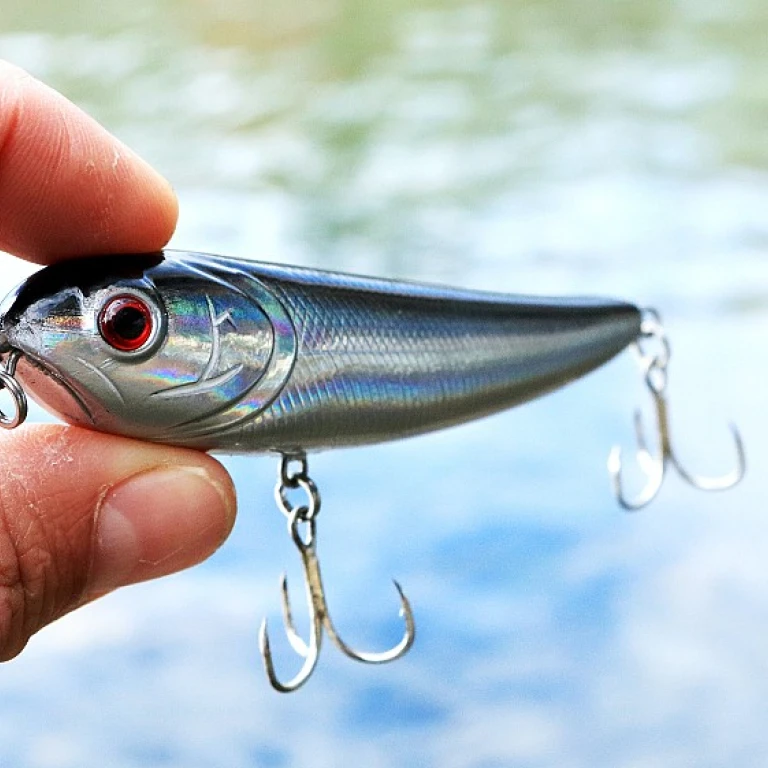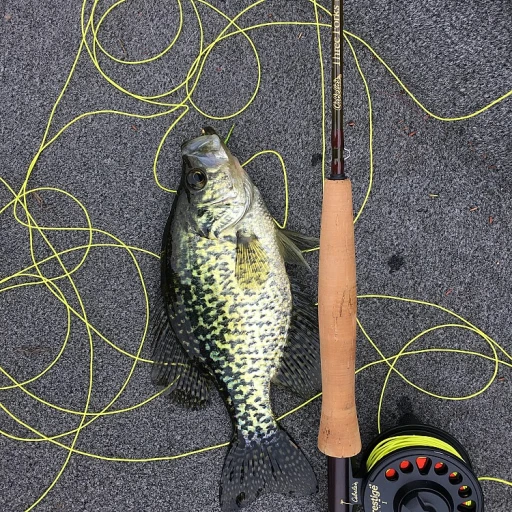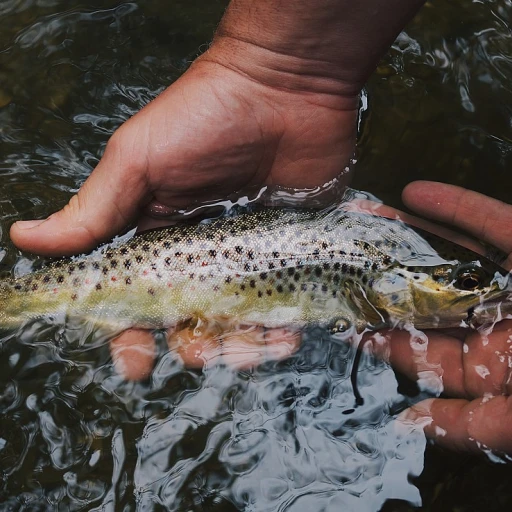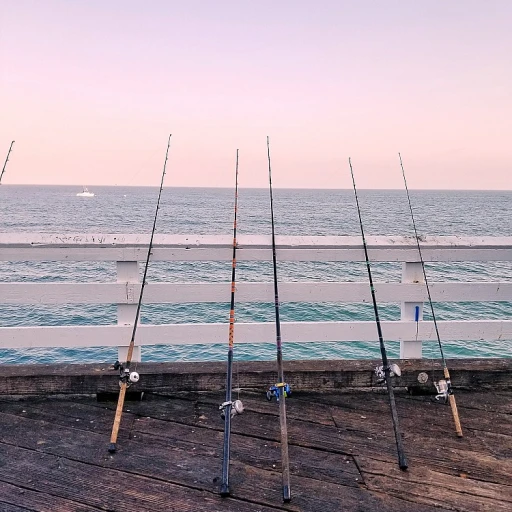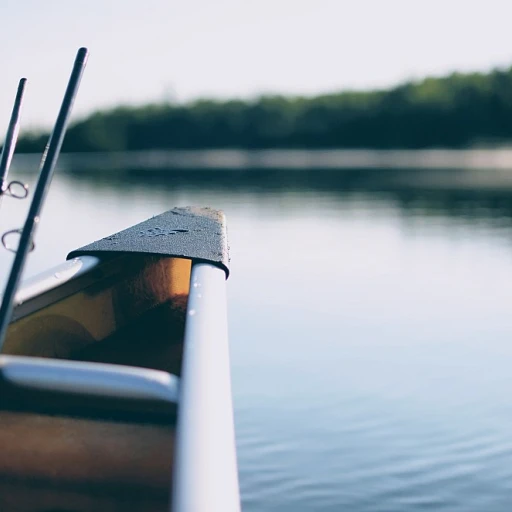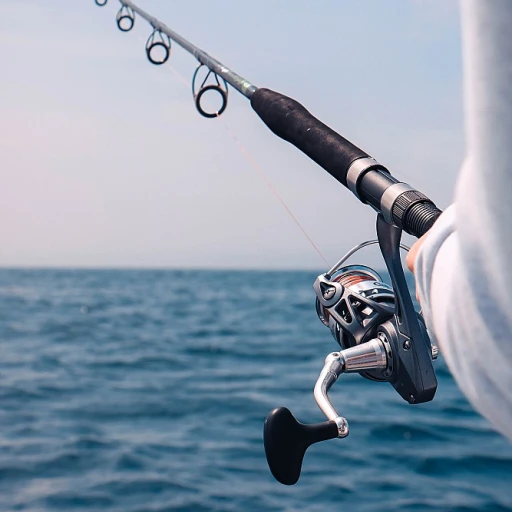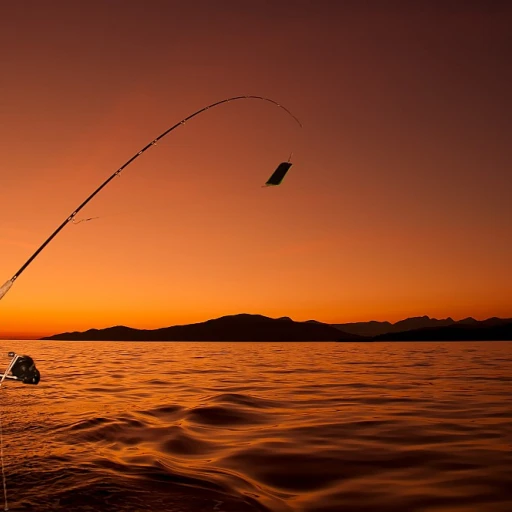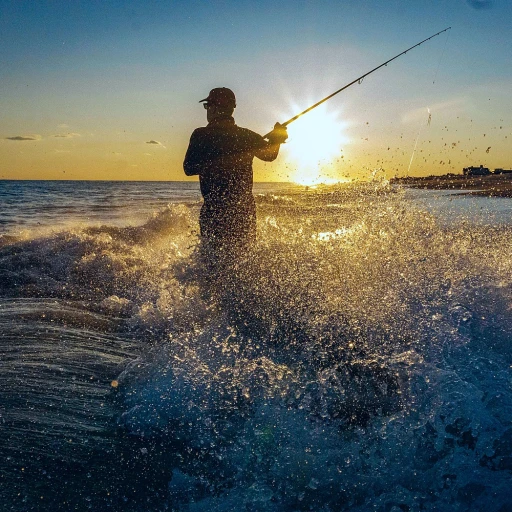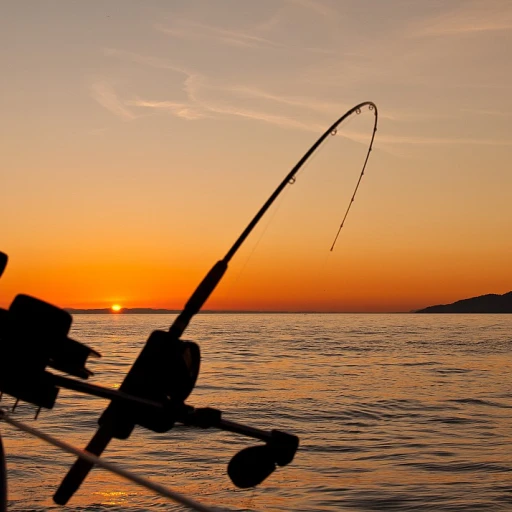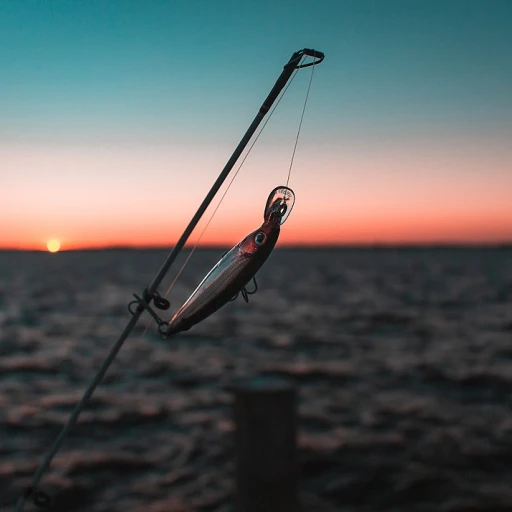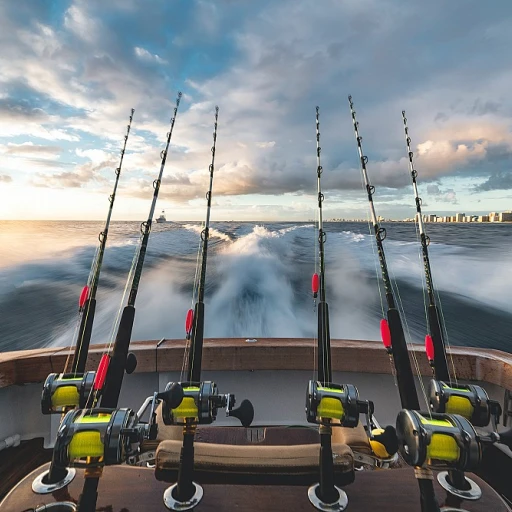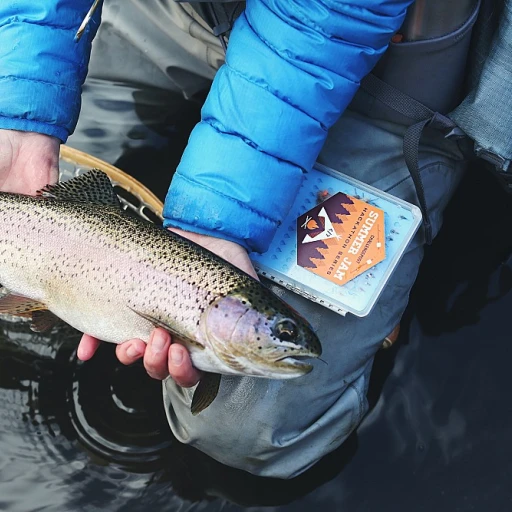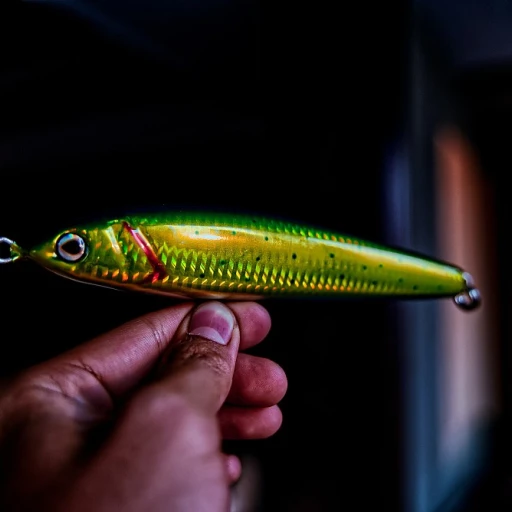
Understanding Small Bass Flies
Exploring the Diversity of Small Bass Flies
Small bass flies open up a world of possibilities in the realm of fly fishing, particularly when targeting smallmouth bass. Understanding this niche segment is key to elevating your fishing experience. These meticulously designed flies are crafted to mimic the natural prey of bass, notably in waters where bass and smallmouth varieties are prevalent.
Small bass flies come in various options and patterns, each offering unique advantages. Whether you're drawn to the classic woolly bugger or looking to explore the versatility of poppers, there is a fly to suit every angler's needs. The best flies usually combine durability with an attention to detail that ensures effectiveness in different water conditions.
Typically, these flies are priced in the USD unit range, with their regular price reflecting the quality of materials used and the intricacy of the fly tying process. Occasionally, anglers can find them at a sale price, making it an opportune moment to expand their collection.
For those seeking to delve deeper into the art of fly fishing flies, a comprehensive guide to fly fishing flies can be an invaluable resource. It offers insights into patterns, tying techniques, and selecting the right fly for your fishing adventures, ensuring that your tackle box is filled with the best possible flies for your next bass fishing expedition.
Choosing the Right Small Bass Flies
Selecting the Perfect Fly for Your Catch
When embarking on your fly fishing journey, choosing the right bass fly is essential for a successful outing. Many anglers find themselves overwhelmed with the myriad of options available, but focusing on a few key aspects can simplify the process. Begin by considering the environment. Water clarity, temperature, and the nature of the water body can greatly influence your choices. While some bass flies like the Woolly Bugger are versatile across various conditions, others might be more suited for clearer waters or warmer temperatures.
Fly patterns play a vital role too, with some of the best patterns mimicking the natural diet of bass. For instance, poppers can be an exciting choice for surface water action, enticing the fish with their unique movement and noise. Additionally, exploring fly patterns that resemble trout or small fish can pique the interest of smallmouth bass.
When it comes to price, options abound. There's a visible difference between flies on sale and those available at a regular price. A price in USD may range widely depending on the brand and intricacy of the pattern. It's worth noting that flies from reputable manufacturers often ensure quality and durability, saving you from frequently replacing your fly collection.
Adding diverse bass flies to your tackle box also involves reviewing the unit price, keeping an eye out for promotions or sales which can offer them at a reduced price compared to the regular USD price. This way, you can diversify your fly patterns without breaking the bank.
Understanding your fly line and rod capabilities further refines your fly selection. Regular practice with fly reels ensures smooth casting, and knowing the best fly lines to match with your flies will greatly improve your chances of a catch.
For a deeper dive into maximizing your fly fishing techniques, consider discovering these expert tips which can significantly enhance your aquatic adventures.
Techniques for Using Small Bass Flies
Mastering the Art of Presentation
Small bass flies can become an angler's secret weapon when employed effectively. To truly master these flies, one must hone a few key techniques.- Casting Precision: For fly fishing with smallmouth bass, precision is crucial. Use a fly rod that complements the lightweight nature of these flies. Fly rods should have an action that matches the water conditions and fish size. Regular practice in casting can significantly enhance your accuracy.
- Strip and Pause Retrieve: When using these flies, the strip and pause retrieve can prove effective. This technique mimics the natural movement of prey in water, tempting smallmouth bass to strike. It's often employed with patterns such as poppers and woolly buggers.
- Line Management: Successful fishing isn't just about the flies; a critical component is maintaining control of your fly lines. Selecting lines with the right weight can bolster your efforts across different water scenarios.
Top Small Bass Fly Patterns
Favorite Flies for Bass Enthusiasts
Exploring the top small bass fly patterns can elevate your fishing experience to new heights. Each fly pattern is uniquely designed to attract bass, with particular attention to the behavior and preferences of these fish in various water conditions. Here are some of the best options that are regularly favored by anglers:- Woolly Bugger: A perennial favorite among fly fishing enthusiasts, the Woolly Bugger is known for its versatility and effectiveness. It can imitate a wide range of prey, making it adaptable in both murky and clear waters. With its unique material composition, this pattern offers movement that attracts both largemouth and smallmouth bass.
- Clouser Minnow: This pattern is celebrated for its simplicity and profound impact on bass. It's geared towards deep water fishing, enticing bass with its streamline profile. The Clouser Minnow's weighted eyes provide it with a swimming action that mimics small baitfish, making it irresistible to bass.
- Deceiver: Known for mimicking a variety of baitfish, the Deceiver is an iconic fly that has proven its prowess time and again. Regularly showcased on the lists of best bass flies, it works wonders in enticing reactions from predatory fish like bass.
- Popper Flies: When you're looking to add a little surface action, popper flies are must-haves in your fly box. These float on the water surface, creating noise and commotion that attract bass. They offer an exciting way to target bass and witness their aggressive strikes.
Maintenance and Care for Your Small Bass Flies
Proper Handling and Storage
Maintaining your small bass flies isn't just about ensuring their longevity, but also about preserving their effectiveness in water. It's crucial to handle them with care, ensuring they don't get crushed in your tackle box. Opt for fly boxes with compartments to keep each fly separate. Avoid storing them with wet flies to prevent rust.Cleaning and Drying
After a day of fly fishing, always take the time to clean your bass flies. Rinse them gently using fresh water to remove any mud, algae, or other debris that might adhere to them. Allow them to air dry completely before putting them back in the fly box. This reduces the risk of rusting, which can be detrimental to the lifespan of your fly, especially those with metal components like the popular woolly bugger or popper.Repair and Revitalization
Occasionally, your flies might need some repair or touch-up. Fly tying can be a helpful skill here, especially for touching up the patterns and ensuring they maintain their vibrancy. Some bass flies, over time, may lose their effectiveness due to wear and tear. Learning to tie your flies or knowing a reputable shop that can do it might keep your flies in sale-ready condition.Seasonal Checks
Prior to the fishing season, take a moment to check your inventory. This not only ensures that they're in ready-to-use condition but also allows you to assess your stock. Perhaps you need to add a new bass fly or restock a regular fly that's been successful in catching smallmouth bass. Be mindful of pricing, whether it's the regular price or sale USD options.Stay Updated
The world of fly fishing is ever-evolving, with new innovations in fly designs regularly coming onto the market. Keeping informed with the latest models, such as those from Fulling Mill, can be beneficial. They might offer flies incorporating new materials or designs, potentially at a price USD that suits your budget, whether it's a unit sale or regular price deal. In conclusion, looking after your small bass flies with regular maintenance and careful storage ensures they're always ready to perform their best when you get a chance to head out to the water. This attention to detail can significantly enhance your fishing success and keep your fly fishing experience both satisfying and cost-effective.Innovations in Small Bass Fly Design
Innovative Advancements in Bass Fly Design
The craft of creating bass flies has significantly evolved, bringing about several innovations that enhance the overall fishing experience. Whether it's for smallmouth bass or any other species, the introduction of new materials and techniques has allowed anglers to perfect their presentations and increase effectiveness on the water.
A notable advancement is the use of advanced synthetic materials in fly tying. These materials mimic the natural movement of insects and baitfish in the water more effectively than traditional materials. This ultimately benefits flies targeting both bass and trout, providing realistic motion that lures fish more effectively.
Another innovation lies in the design of poppers, which are specifically tailored to induce surface strikes from aggressive fish. Modern poppers incorporate noise-making features or innovative shapes that improve their performance on water. Anglers can find these bass fly varieties at regular price and often at a sale price, offering a range of options depending on their budget.
Fulling Mill and other renowned brands continue to push the boundaries in fly design, releasing new patterns and colors that cater to specific fish behaviors and water conditions. As anglers search for the best patterns available, it's essential to consider the latest designs that can make a significant difference in their success rates.
Moreover, technological advancements have not only influenced fly design but also the equipment used, such as fly rods and fly reels. The synergy between these modern tools and innovative bass fly designs amplifies an angler's ability to achieve precision casting and effortless retrieval.
For anglers with a penchant for fly tying, many of these innovations are inspiring creative endeavors. Selecting the right materials and understanding the intricacies of modern designs can lead to personalized fly patterns that perform exceptionally well at attracting smallmouth and largemouth bass alike.
Overall, the realm of bass fly fishing is continually evolving. By embracing these cutting-edge designs and advancements, anglers are better positioned to elevate their fishing success, ensuring a memorable experience each time they cast their flies into the water.

